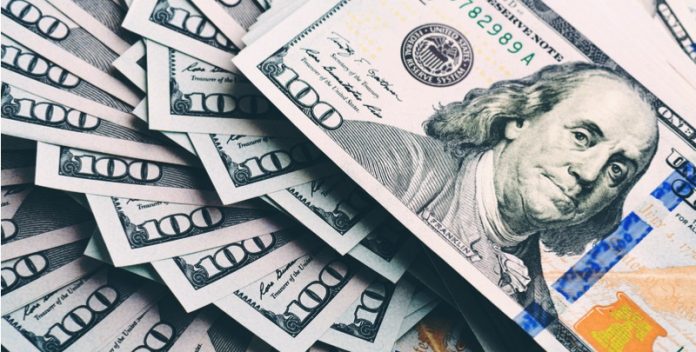The pound fell below $1.2700 versus the U.S. dollar after Bank of England (BoE) Governor, Mark Carney, gave a gloom outlook over raising interest rates and as investors refocused on the UK’s political instability.
| What do these figures mean? |
|---|
|
When measuring the value of a pair of currencies, one set equals 1 unit and the other shows the current equivalent. As the market moves, the amount will vary from minute to minute. For example, it could be written: 1 GBP = 1.28934 USD Here, £1 is equivalent to approximately $1.29. This specifically measures the pound’s worth against the dollar. If the U.S. dollar amount increases in this pairing, it’s positive for the pound. Or, if you were looking at it the other way around: 1 USD = 0.77786 GBP In this example, $1 is equivalent to approximately £0.78. This measures the U.S. dollar’s worth versus the British pound. If the sterling number gets larger, it’s good news for the dollar. |
In his address at Mansion House, Carney said interest rates should remain on hold for now. His comments come just days after three BoE Monetary Policy Committee (MPC) members voted to hike the rates, sending the pound soaring. However, the optimism following the MPC meeting quickly waned as Carney’s comments yesterday dashed hopes of a rate hike. This caused the pound to crash to $1.2626, a two month low versus the dollar.
| Why do raised interest rates boost a currency’s value? |
|---|
| Interest rates are key to understanding exchange rate movements. Those who have large sums of money to invest want the highest return on their investments. Higher interest rate environments tend to offer higher yields. So, if the interest rate or at least the interest rate expectation of a country is relatively higher compared to another, then it attracts more foreign capital investment. Large corporations and investors need local currency to invest. More local currency used then boosts the demand of that currency, pushing the value higher. |
Political jitters will surface once more today as UK Prime Minister, Theresa May, is due to give the Queen’s Speech in the official Opening of State Parliament. However, rather embarrassingly, she’ll be doing so with a minority government, despite saying 10 days ago that she had the Democratic Unionist Party (DUP) on-side.
As the UK Conservatives failed to win a majority in the UK general election, they are trying to reach an agreement with Northern Ireland’s Democratic Unionist Party (DUP). The deal was expected to have been done before the Queen’s Speech. However, leaked reports are indicating there are problems between the two parties. The Conservative’s weak negotiating ability doesn’t look good just as Brexit negotiations are beginning. Furthermore, a minority government spells political instability – which could weigh on the pound.
| How does political stability boost a currency? |
|---|
| Political stability boosts both consumer and business confidence, which means corporations and regular households alike are more likely to spend money. The increased spending, in turn, then boosts the economy. Foreign investors prefer to invest their money in politically stable countries as well as those with strong economies. For foreign investors to put their money into an economy, they need local currency. As they acquire the money needed, the demand for that particular currency increases, which then boosts its value. |
Public appearances by U.S. Federal Reserve officials continue to boost the dollar
Fed Reserve speakers in the U.S. carry on taking the limelight, thanks to a shortage of macroeconomic data. Buying interest towards the U.S. dollar has been picking up, in part due to the fragile pound and, in part, due to encouraging comments from Fed officials.
Earlier in the week, the influential New York Federal Reserve head painted an upbeat picture for the outlook of the U.S. economy. He said he thought wages, which have remained low, would pick up soon. This would increase inflationary pressures in the U.S. economy and produce a need to increase interest rates.
Adding to the optimism, Boston Federal Reserve member E. Rosengren also weighed in, commenting that low rates pose risks to financial stability. With little else to focus on, the dollar charged higher, pulling the pound dollar exchange rate even lower for sterling. Today could be a slow day for the dollar with no important macro data nor Fed speakers to drive price movement.
|
This article was initially published on TransferWise.com from the same author. The content at Currency Live is the sole opinion of the authors and in no way reflects the views of TransferWise Inc. |





